Ivan Cenzi brings a strange story of suicide to Death and the Maiden this week. One beginning with sorrow and ending in spectacle. It’s 1863 and on hearing of a young girl’s suicide, anatomist Lodovico Brunetti requests her body be brought to him for experiments. What evolves from his casting and preservation work is unexpected. A perfect example of intersection between art, anatomy and the sacred, it is one of the most challenging displays still visible in the ‘Morgagni’ Museum of Anatomical Pathology in Padova. This museum is the subject of Ivan’s latest book ‘His Anatomical Majesty’, featuring stunning photography from Carlo Vannini and access to other incredible exhibits from the collection.
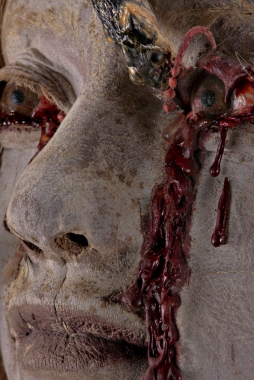
– Ivan Cenzi –

Ivan Cenzi is an explorer of the uncanny and collector of curiosities. He runs the blog Bizzarro Bazar, and is the author of the Bizzarro Bazar Collection, a series of books on Italy’s macabre wonders (both in Italian and English language).
The “Morgagni” Museum of Pathology in Padova is the focus of the collection’s latest entry, His Anatomical Majesty.
Photography by Carlo Vannini.
Padova, Italy. 1863
One ash-grey morning, a young girl jumped into the muddy waters of the river which ran just behind the city hospital. We do not know her name, only that she worked as a seamstress, that she was 18 years old, and that her act of suicide was in all probability provoked by “amorous delusion”.
A sad yet rather unremarkable event, one that history could have well forgotten – hadn’t it happened, so to speak, in the right place and time.
The city of Padova was home to one of the oldest Universities in history, and it was also recognized as the cradle of anatomy. Among others, the great Vesalius, Morgagni and Fallopius had taught medicine there; in 1595 Girolamo Fabrici d’Acquapendente had the first stable anatomical theater built inside the University’s main building, Palazzo del Bo.
In 1863, the chair of Anatomical Pathology at the University was occupied by Lodovico Brunetti (1813-1899) who, like many anatomists of his time, had come up with his own process for preserving anatomical specimens: tannization. His method consisted in drying the specimens and injecting them with tannic acid; it was a long and difficult procedure (and as such it would not go on to have much fortune) but nonetheless gave astounding results in terms of quality. I have had the opportunity of feeling the consistency of some of his preparations, and still today they maintain the natural dimensions, elasticity and softness of the original tissues.
But back to our story.
When Brunetti heard about the young girl’s suicide, he asked her body be brought to him, so he could carry out his experiments.
First he made a plaster cast of the her face and upper bust. Then he peeled away all of the skin from her head and neck, being especially careful as to preserve the girl’s beautiful golden hair. He then proceeded to treat the skin, scouring it with sulfuric ether and fixing it with his own tannic acid formula. Once the skin was saved from putrefaction, he laid it out over the plaster cast reproducing the girl’s features, then added glass eyes and plaster ears to his creation.
But something was wrong.
The anatomist noticed that in several places the skin was lacerated. Those were the gashes left by the hooks men had used to drag the body out of the water, unto the banks of the river.
Brunetti, who in all evidence must have been a perfectionist, came up with a clever idea to disguise those marks.
He placed some wooden branches beside her chest, then entwined them with tannised snakes, carefully mounting the reptiles as if they were devouring the girl’s face. He poured some red candle wax to serve as blood spurts, and there it was: a perfect allegory of the punishment reserved in Hell to those who committed the mortal sin of suicide.
He called his piece The Punished Suicide.

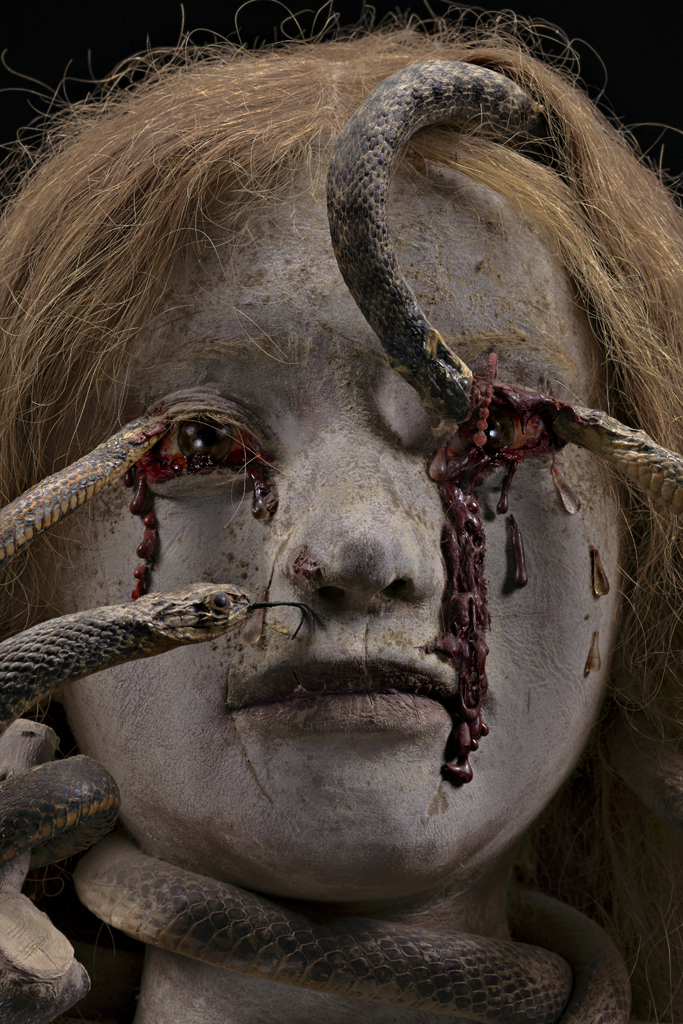
Now, if this was all, Brunetti would look like some kind of psychopath, and his work would just be unacceptable and horrifying, from any kind of ethical perspective.
But the story doesn’t end here.
After completing this masterpiece, the first thing Brunetti did was showing it to the girl’s parents.
And this is where things take a really weird turn.
Because the dead girl’s parents, instead of being dismayed and horrified, actually praised him for the precision shown in reproducing their daughter’s features.
“So perfectly did I preserve her physiognomy – Brunetti proudly noted, – that those who saw her did easily recognize her”.
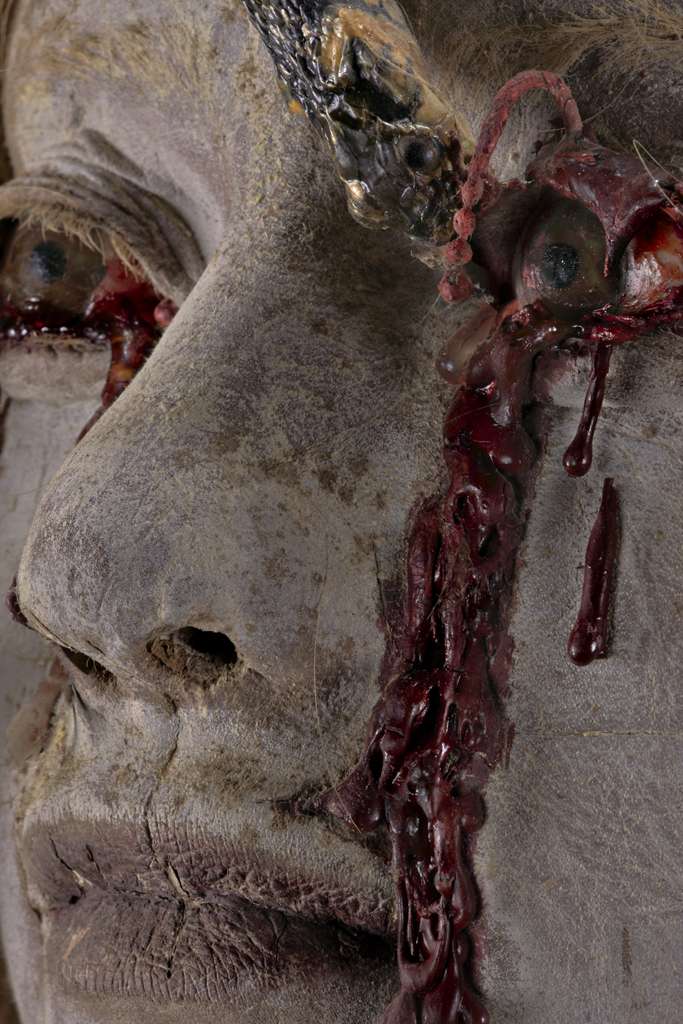
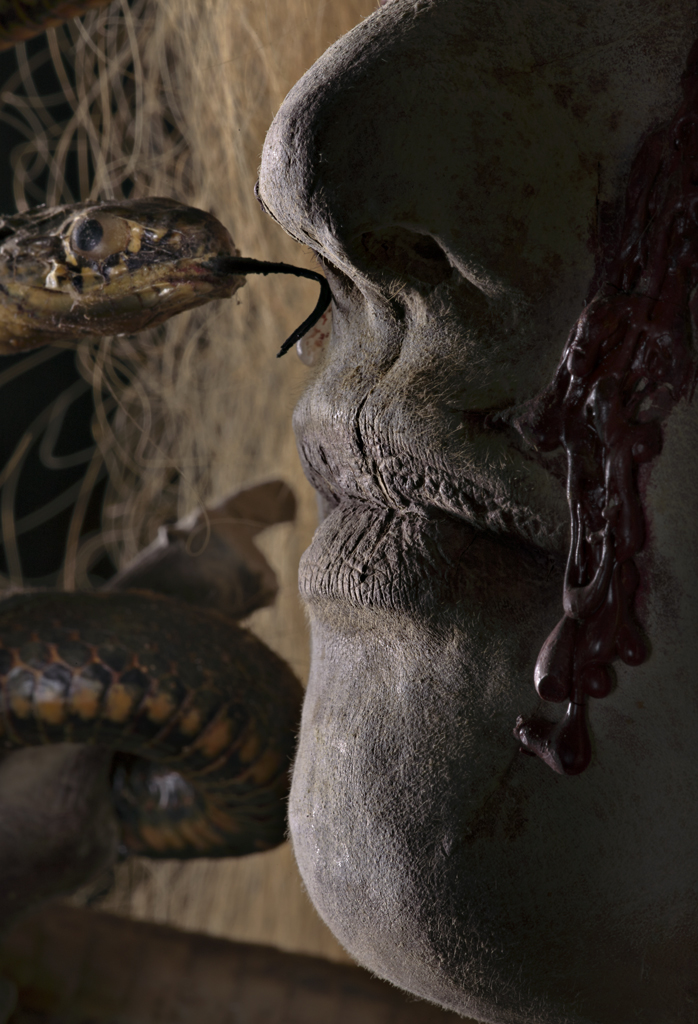
But wait, there’s more.
Four years later, the Universal Exposition was opening in Paris, and Brunetti asked the University to grant him funds to take the Punished Suicide to France. You would expect some kind of embarrassment on the part of the university, instead they happily financed his trip to Paris.
At the Universal Exposition, thousands of spectators swarmed in from all around the world to see the latest innovations in technology and science, and saw the Punished Suicide. What would you think happened to Brunetti then? Was he hit by scandal, was his work despised and criticized?
Not at all. He won the Grand Prix in the Arts and Professions.
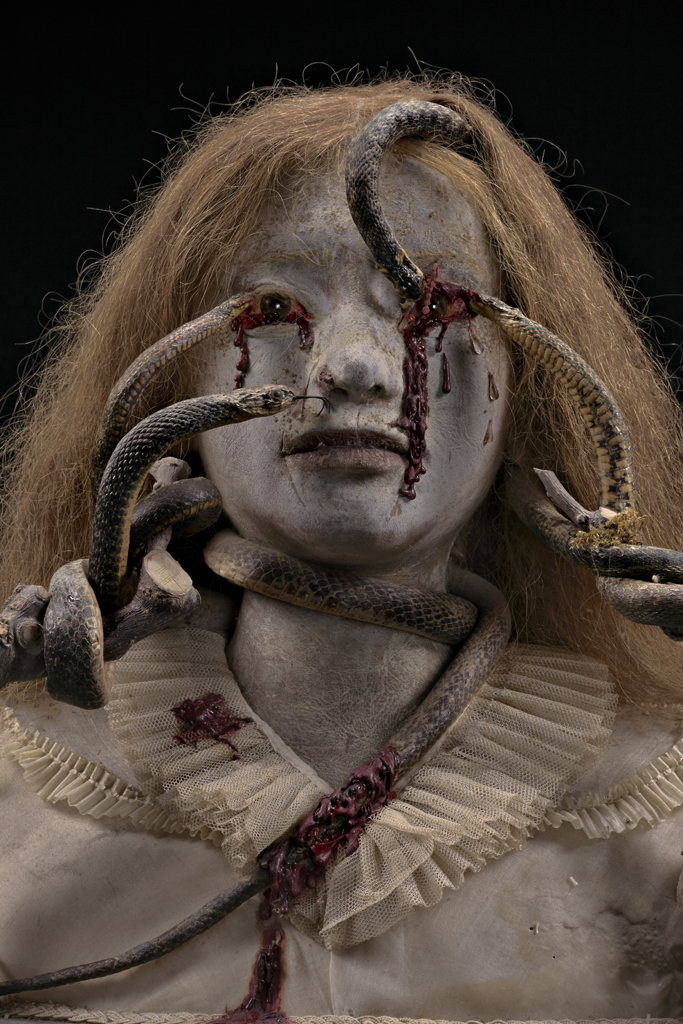
If you feel kind of dizzy by now, well, you probably should.
Looking at this puzzling story, we are left with only two options: either everybody in the whole world, including Brunetti, was blatantly insane; or there must exist some kind of variance in perception between our views on mortality and those held by people at the time.
It always strikes me how one does not need to go very far back in time to feel this kind of vertigo: all this happened less than 150 years ago, yet we cannot even begin to understand what our great-great-grandfathers were thinking.
Of course, anthropologists tell us that the cultural removal of death and the medicalization of dead bodies are relatively recent processes, which started around the turn of the last century. But it’s not until we are faced with a difficult “object” like this, that we truly grasp the abysmal distance separating us from our ancestors, the intensity of this shift in sensibility.
The Punished Suicide is, in this regard, a complex and wonderful reminder of how society’s boundaries and taboos may vary over a short period of time.
A perfect example of intersection between art (whether or not it encounters our modern taste), anatomy (it was meant to illustrate a preserving method) and the sacred (as an allegory of the Afterlife), it is one of the most challenging displays still visible in the ‘Morgagni’ Museum of Anatomical Pathology in Padova.
This nameless young girl’s face, forever fixed in tormented agony inside her glass case, cannot help but elicit a strong emotional response. It presents us with many essential questions on our past, on our own relationship with death, on how we intend to treat our dead in the future, on the ethics of displaying human remains in Museums, and so on.
On the account of all these rich and fruitful dilemmas, I like to think her death was at least not entirely in vain.

Leave a comment